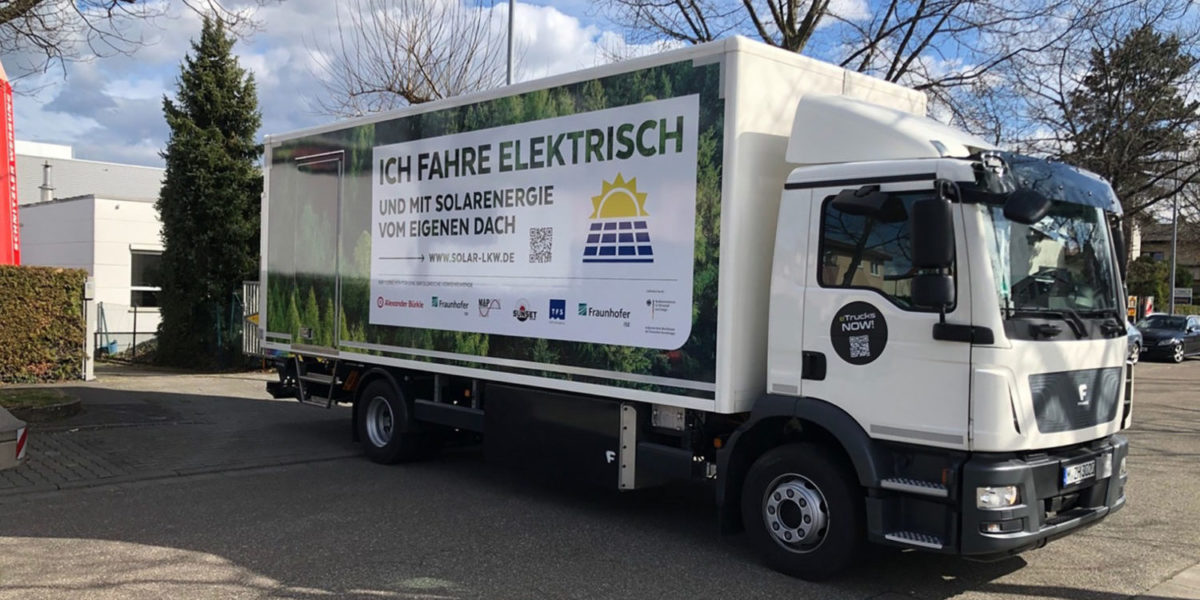From pv magazine Germany
The transport sector's energy transition is stalling. Electric cars are still in short supply and biofuels are also controversial. Heavy goods traffic alone accounts for around 6% of all CO2 emissions in the European Union. But the organizations and companies behind the new “Lade PV” research project want to restore some balance to the situation.
Four industrial companies and two Fraunhofer institutes – led by the Fraunhofer Institute for Solar Energy Systems ISE – are now working to demonstrate the marketability of PV applications in commercial transport.
Over the course of the three-year research project, they will create an overall concept to facilitate the development of vehicle-integrated solar modules to be used on electric cars and other heavy-duty vehicles. The consortium will focus on individual components such as solar modules and power electronics, as well as manufacturing processes for PV applications. The prototypes will be demonstrated on an electric truck, Fraunhofer ISE said.
The German institute will initially develop light, robust solar modules for two applications. One variant will involve retrofitting an existing roof, while a second version will be designed for complete integration into the body of a vehicle. The solar modules will need to be vibration-proof, durable and easy to install, while not exceeding a weight of 2.6 kg per square meter, the researchers said.
The research group wants to come up with a concept to mass-produce lightweight modules. An existing production line from German manufacturer Sunset Energietechnik will be converted for this purpose.
The concept will be tested and certified on a demonstration truck. According to Fraunhofer-ISE, new semiconductor technologies will be used because of the limited installation space and weight requirements of the project. “Such components operate at high frequencies and thus have a more compact design,” it said.
The Fraunhofer Institute for Transport and Infrastructure Systems IVI, which is also involved in the project, will develop an energy forecast model for the prototype vehicle. The demonstration vehicle will then be tested by Alexander Bürkle in Freiburg, Germany.
“We want to develop the technology, while also demonstrating that trucks can use onboard PV to meet over 5% of their energy demand,” explained Christoph Kutter, project manager at Fraunhofer ISE. “Calculations show that 4,000 to 6,000 kilometers of additional driving range per year are possible.”
This content is protected by copyright and may not be reused. If you want to cooperate with us and would like to reuse some of our content, please contact: editors@pv-magazine.com.




I would suggest that refrigerated trucks using ICE engines could reasonably benefit from integrated PV serving the refrigeration system, and so taking burden off an on board generator, and would suggest that this option be considered as each panel would have a greater impact on both costs and CO2 emissions than PV on an electric truck.